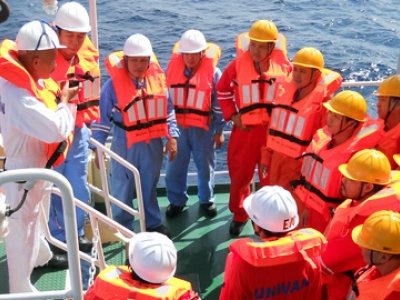Navigating the vast oceans involves more than just steering a ship; it encompasses a complex web of regulations designed to ensure safety, protect workers’ rights, and safeguard the marine environment. From historical origins to modern-day challenges, maritime employment regulations play a pivotal role in shaping the dynamics of the global shipping industry.
1. Introduction
Maritime employment regulations form the backbone of the maritime sector, encompassing a diverse range of laws and standards aimed at promoting safety, fairness, and sustainability. Without these regulations, the maritime industry would be akin to a ship adrift in a storm, lacking direction and stability.
2. Historical Background
The evolution of maritime employment regulations can be traced back centuries, reflecting the gradual recognition of the need for standardized rules to govern maritime activities. From ancient maritime codes to modern international conventions, the journey has been marked by milestones that have shaped the current regulatory landscape.
3. Key Regulatory Bodies
At the forefront of maritime regulation is the International Maritime Organization (IMO), a United Nations agency responsible for developing and maintaining global maritime standards. In addition to the IMO, individual nations have their own maritime authorities tasked with enforcing domestic regulations and ensuring compliance within their territorial waters.
4. Types of Maritime Employment Regulations
Maritime employment regulations cover a wide array of areas, including safety standards, labor practices, and environmental protection. Safety regulations dictate protocols for vessel construction, equipment maintenance, and emergency response procedures, while labor standards govern issues such as wages, working hours, and crew welfare. Environmental regulations, on the other hand, focus on minimizing the ecological footprint of maritime operations through measures such as pollution prevention and resource conservation.
5. Compliance Requirements
Achieving compliance with maritime employment regulations entails a multifaceted approach, involving certification, documentation, and ongoing training. Vessels must undergo rigorous inspections to obtain relevant certificates of compliance, while crew members are required to possess the necessary qualifications and training to perform their duties safely and efficiently.
6. Challenges in Enforcement
Despite the existence of regulatory frameworks, enforcing maritime employment regulations poses numerous challenges, chief among them being jurisdictional issues and the dichotomy between flag state and port state control. Determining which laws apply in international waters and ensuring consistent enforcement across different jurisdictions remain ongoing challenges for the maritime community.
7. Recent Developments
Advancements in technology and evolving societal norms have prompted significant changes in maritime employment regulations. From the adoption of digital solutions for record-keeping to the revision of outdated labor laws, recent developments reflect the industry’s commitment to staying abreast of changing realities.
8. Impact on Maritime Industry
Compliance with maritime employment regulations carries both costs and benefits for industry stakeholders. While investments in safety and environmental protection entail financial outlays, adherence to regulatory standards also enhances operational efficiency, reduces risks, and enhances the industry’s reputation.
9. Future Outlook
Looking ahead, the maritime industry faces a host of emerging trends and potential reforms that are likely to shape the future regulatory landscape. From the rise of autonomous vessels to the growing emphasis on sustainability, the industry must adapt to new realities while upholding its commitment to safety, fairness, and environmental stewardship.
10. Conclusion
In conclusion, maritime employment regulations form the cornerstone of a thriving and sustainable maritime industry. By ensuring safety, protecting workers’ rights, and preserving the marine environment, these regulations lay the foundation for a maritime sector that is both prosperous and responsible.
FAQs:
1. What is the role of the International Maritime Organization (IMO) in regulating maritime employment? The International Maritime Organization (IMO) plays a central role in developing and maintaining global maritime standards, including those related to employment practices, safety, and environmental protection.
2. How do maritime employment regulations impact crew welfare? Maritime employment regulations govern various aspects of crew welfare, including working hours, living conditions, and access to medical care, to ensure the well-being of seafarers at sea.
3. What challenges does the maritime industry face in enforcing regulatory compliance? Enforcing regulatory compliance in the maritime industry is challenging due to jurisdictional issues, differences in national regulations, and the complexity of international shipping operations.
4. How do technological advancements influence maritime employment regulations? Technological advancements, such as digitalization and automation, are reshaping maritime employment regulations by facilitating more efficient record-keeping, enhancing safety measures, and promoting environmental sustainability.
5. What are some emerging trends in maritime employment regulations? Emerging trends in maritime employment regulations include the rise of autonomous vessels, increased focus on crew training and welfare, and growing efforts to address gender equality and diversity in the maritime workforce.


